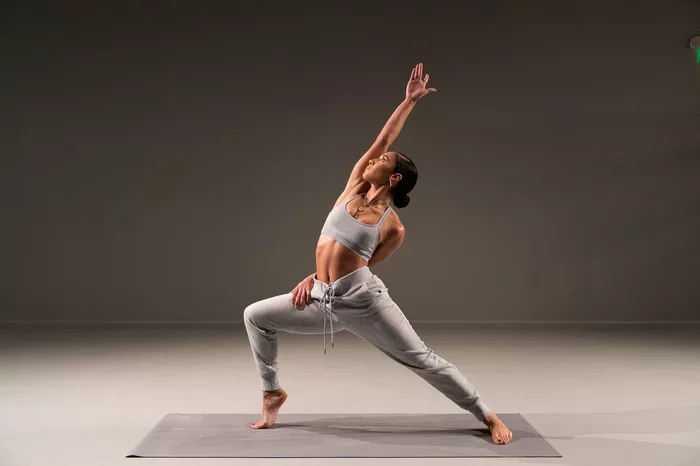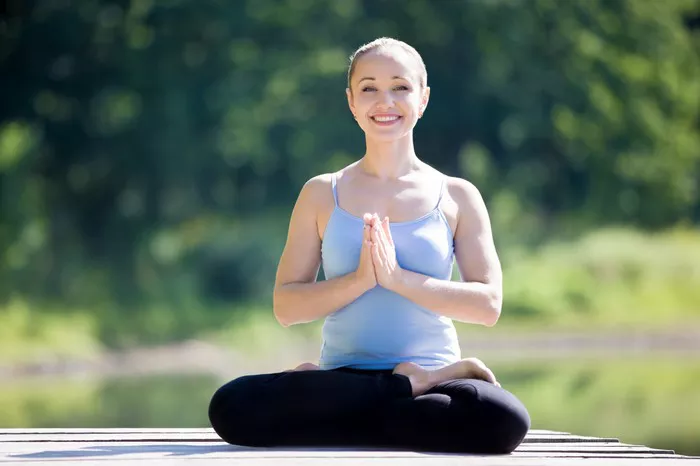Pranayama, a term derived from the Sanskrit words prana (life force or vital energy) and ayama (control or extension), refers to the practice of breath control in yoga. The breathing techniques or pranayamas are central to the yogic practice and serve as powerful tools to enhance physical health, calm the mind, and elevate spiritual awareness.
In the classical teachings of yoga, pranayama is regarded as the fourth limb of the eight-limbed path described in the Yoga Sutras of Patanjali. As the foundation of yoga practice, pranayama is used not only to control the breath but also to control the energy within the body. Properly practiced, pranayama can lead to improved mental clarity, emotional balance, and physical vitality.
This article will delve into the 8 main pranayamas, their benefits, and how to practice them effectively. We will explore each technique in detail, highlighting their significance and effects on the body and mind.
1. Ujjayi Pranayama (Victorious Breath)
Ujjayi, often referred to as the “victorious breath,” is one of the most common and foundational pranayamas practiced in yoga. The technique is known for its soothing and calming effects on the mind and body.
How to Practice Ujjayi Pranayama:
- Begin by sitting in a comfortable position with a straight spine and relaxed shoulders.
- Close your eyes and start to breathe deeply through your nose.
- Inhale and exhale slowly, constricting the back of your throat as you breathe. This creates a soft, ocean-like sound, often described as the sound of a whisper or the sound of the waves.
- The breath should be steady and controlled, focusing on a smooth and even inhale and exhale.
- Maintain a calm, slow rhythm of breathing, allowing the breath to become the focus of your practice.
Benefits of Ujjayi Pranayama:
- It helps to calm the nervous system, reduce stress, and enhance mental clarity.
- The sound of the breath can serve as a tool for concentration, allowing the practitioner to stay focused during meditation or asana practice.
- Ujjayi breath increases oxygen flow, improves lung capacity, and aids in digestion.
- It creates a feeling of warmth in the body, which is beneficial during physical practice.
2. Anulom Vilom Pranayama (Nadi Shodhana or Alternate Nostril Breathing)
Anulom Vilom, also known as Nadi Shodhana (meaning “channel cleansing”), is a balancing and purifying pranayama that alternates breathing through each nostril. This practice is believed to help clear the nadis, or energy channels, promoting the smooth flow of prana (life energy) through the body.
How to Practice Anulom Vilom Pranayama:
- Begin by sitting comfortably in a meditative posture.
- Close your right nostril using your right thumb and inhale deeply through the left nostril.
- Close the left nostril using your right ring finger, then exhale slowly through the right nostril.
- Inhale deeply through the right nostril, then close the right nostril with your thumb.
- Exhale slowly through the left nostril.
- This completes one cycle. Repeat for several minutes, focusing on the rhythm of your breath.
Benefits of Anulom Vilom Pranayama:
- It helps to balance the left and right hemispheres of the brain, promoting mental clarity and emotional stability.
- It is known to reduce stress and anxiety, helping to calm the mind.
- Regular practice can improve lung function, increase oxygen intake, and purify the respiratory system.
- It balances the body’s energy and is said to harmonize the sympathetic and parasympathetic nervous systems.
3. Kapalbhati Pranayama (Skull Shining Breath)
Kapalbhati is a powerful breathing technique that involves forceful exhalations followed by passive inhalations. This pranayama is often associated with cleansing the body and mind, and it can be invigorating and energizing when practiced correctly.
How to Practice Kapalbhati Pranayama:
- Sit comfortably with your spine erect.
- Inhale deeply and then exhale forcefully through your nose, using your abdominal muscles to push the air out.
- Allow the inhalation to occur naturally and passively after each exhalation.
- Focus on the exhalations, making them sharp and powerful, while allowing the inhalation to be relaxed.
- Begin with a few rounds of 10–20 exhalations, gradually increasing the duration over time.
Benefits of Kapalbhati Pranayama:
- It stimulates the abdominal organs, enhancing digestion and detoxification.
- The rapid exhalations help to clear the respiratory system and improve lung capacity.
- It increases mental alertness and concentration.
- Kapalbhati is believed to improve the tone and appearance of the skin, promoting a healthy glow.
- It is an energizing practice, helping to clear sluggish energy and boost vitality.
4. Bhastrika Pranayama (Bellows Breath)
Bhastrika, or “bellows breath,” is a dynamic pranayama that involves quick, forceful inhalations and exhalations. This practice is considered to generate heat in the body and awaken energy, making it an excellent practice for increasing vitality.
How to Practice Bhastrika Pranayama:
- Sit in a comfortable position with an erect spine.
- Take a deep breath in, filling your lungs completely.
- Begin to forcefully inhale and exhale through your nose, making the breath loud and audible, like the sound of bellows.
- The inhalations and exhalations should be vigorous but not strained.
- Perform 10–15 cycles and then pause for a moment, observing the sensations in the body.
Benefits of Bhastrika Pranayama:
- It invigorates the body and mind, increasing energy levels and mental alertness.
- Bhastrika helps to improve oxygen intake and lung capacity.
- It enhances circulation and stimulates metabolic activity, aiding in detoxification.
- This pranayama also stimulates the digestive fire (Agni), promoting better digestion.
5. Sitali Pranayama (Cooling Breath)
Sitali Pranayama is a cooling and calming breath technique. It is practiced by inhaling through the mouth while forming a tube with the tongue and exhaling through the nose. This pranayama is especially beneficial in hot climates or during times of emotional intensity.
How to Practice Sitali Pranayama:
- Sit comfortably with a straight spine.
- Roll your tongue into a tube shape (if this is not possible, you can simply inhale through the teeth with the mouth open).
- Inhale deeply and slowly through the tongue, feeling the coolness as you draw air in.
- Close your mouth and exhale gently through the nose.
- Continue this process for several rounds.
Benefits of Sitali Pranayama:
- It cools the body and reduces excess heat, making it excellent for hot weather or to calm down after intense physical exertion.
- It reduces stress and anxiety, promoting a peaceful state of mind.
- Sitali helps to balance the digestive system and can alleviate issues like indigestion or acidity.
- This pranayama is also believed to aid in reducing high blood pressure.
6. Sitkari Pranayama (Hissing Breath)
Sitkari Pranayama is similar to Sitali but involves inhaling through the teeth, producing a hissing sound. This breath practice is cooling and calming, helping to reduce mental and physical stress.
How to Practice Sitkari Pranayama:
- Sit with a straight spine and relaxed shoulders.
- Open your mouth slightly and touch your upper teeth to your lower teeth.
- Inhale deeply through your mouth, making a hissing sound as you breathe in.
- Close your mouth and exhale gently through your nose.
- Continue for several rounds, focusing on the cooling effect of the breath.
Benefits of Sitkari Pranayama:
- It helps cool the body and reduce feelings of overheating or restlessness.
- Sitkari calms the nervous system, reducing anxiety and stress.
- This technique also aids in improving digestion and detoxifying the body.
- It is useful in balancing emotions and bringing mental clarity.
7. Bhramari Pranayama (Bee Breath)
Bhramari, or “bee breath,” involves making a humming sound while exhaling. It is named after the Bhramara (black bee), as the sound produced during this practice resembles the hum of a bee. This pranayama is particularly beneficial for calming the mind and relieving stress.
How to Practice Bhramari Pranayama:
- Sit comfortably with your spine straight and shoulders relaxed.
- Close your eyes and gently press your ears with your thumbs.
- Inhale deeply through your nose.
- As you exhale, create a low-pitched humming sound, similar to the sound of a bee.
- The sound should be steady and continuous as you exhale.
- Focus on the vibrations of the sound and let the sound reverberate through the head and chest.
Benefits of Bhramari Pranayama:
- It promotes deep relaxation and helps to reduce mental stress and anxiety.
- The humming sound stimulates the vagus nerve, which has a calming effect on the entire nervous system.
- It enhances concentration and mental clarity.
- Bhramari is known to help in relieving headaches and tension in the head and neck area.
8. Murcha Pranayama (Swooning Breath)
Murcha, or “swooning breath,” is an advanced pranayama that involves deep inhalations followed by holding the breath. It is practiced to develop a heightened sense of awareness and to reach deep meditative states. This pranayama should be practiced under the guidance of an experienced teacher.
How to Practice Murcha Pranayama:
- Sit in a comfortable position with an erect spine.
- Take a deep breath and hold it for as long as you comfortably can.
- While holding the breath, maintain your focus on the internal sensations.
- Release the breath slowly and naturally.
- Repeat for several rounds, increasing the duration of breath retention with practice.
Benefits of Murcha Pranayama:
- It helps to cultivate deep states of meditation and inner peace.
- This pranayama promotes mental clarity and focus.
- It increases the flow of prana throughout the body, enhancing spiritual awareness.
- Murcha is believed to increase longevity and strengthen the body and mind.
Conclusion
The practice of pranayama offers a wealth of benefits for the body, mind, and spirit. Whether you seek physical vitality, mental clarity, or spiritual growth, these 8 pranayamas can help you achieve your goals. By incorporating pranayama into your yoga practice, you tap into the powerful life force that flows through you, allowing you to experience profound transformation and harmony.
It is essential to approach pranayama with mindfulness and respect for your body’s limits. Always practice with awareness and under the guidance of an experienced teacher, especially when attempting advanced techniques. By mastering these techniques, you can enhance your overall well-being and deepen your yoga journey.
Related Topics:






















